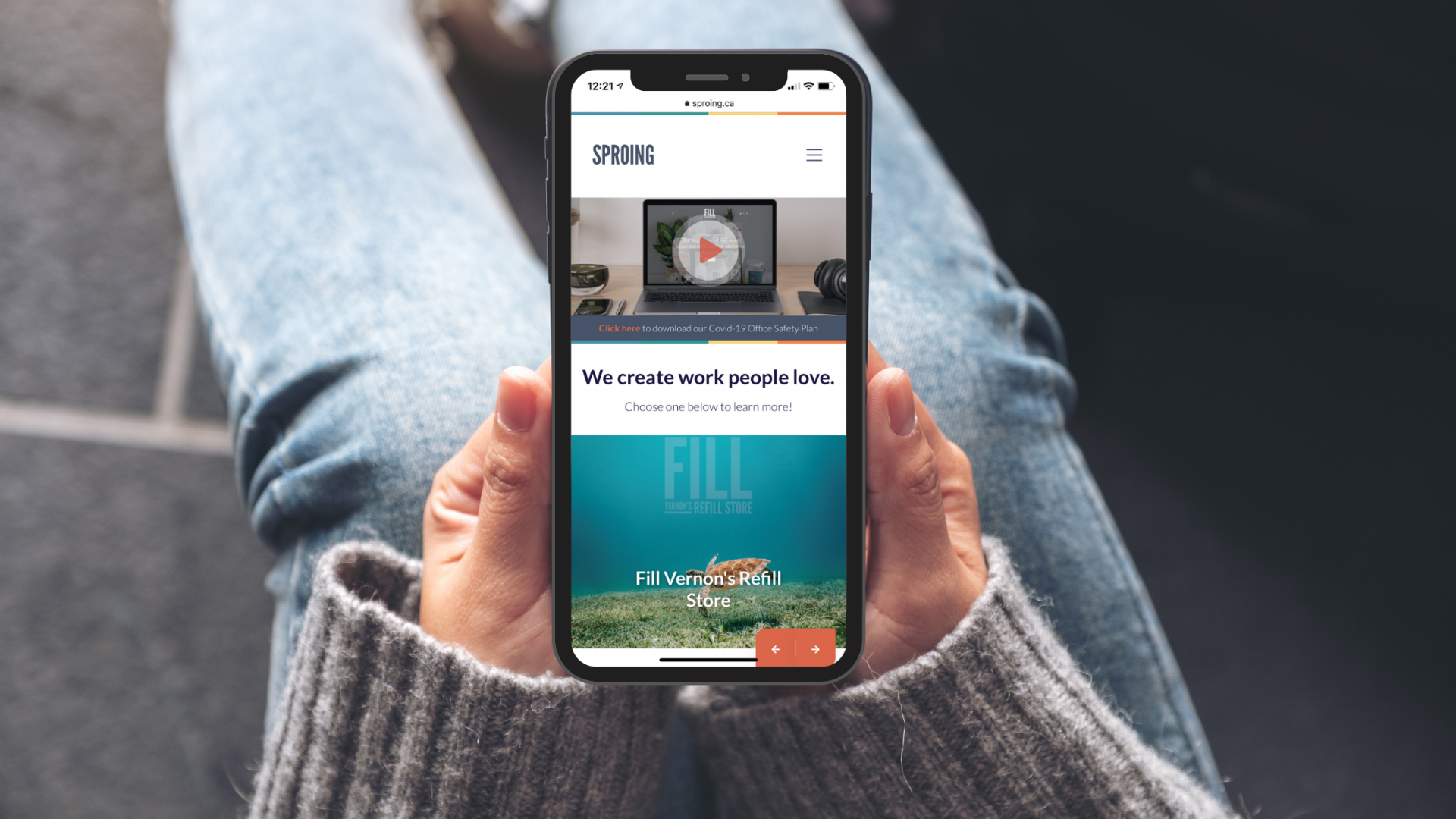5 Ways To Optimize Your Website Today
If your website is the bridge between you and your customers, making sure it’s optimized should be a high priority.
Let’s remove the digital component for a moment and think about the old-school example of a retail storefront experience. In such a case, the storefront is the bridge connecting you with paying customers. To generate walk-ins, you must entice the public to walk through the doors motivated to inquire about your products and services. Then, you need sales techniques to increase the chances these people become paying customers.
There are a few scenarios that could prevent sales:
- You may not have clear signage detailing what you offer.
- Long lineups
- Customers having difficulty finding what they want (bad layout/grouping of items)
- The store is in a poor location
- The store doesn’t have enough parking available
- Messy or smelly store
Whatever the case, you get the point. Now let’s turn to how this applies to websites in today’s world. Websites function similarly to the above example. Potential customers arrive on your website and decide to engage further or leave the site entirely depending on the on-page experience.
Generally speaking, optimized websites provide solutions to the right visitor’s questions.
They perform on-page functions quickly, are mobile-friendly, and clear in their service offerings. Websites that aren’t optimized lack one or all of these characteristics, among others. This post will break down the five ways you can optimize your website as quickly as possible. Whether it’s e-commerce sales, form submissions or good old-fashioned phone calls, we’re here to help your website function as it needs to so your business thrives!
Let’s go!
Define Your Intent First

Crucial to website optimization is being clear in your goals.
For e-commerce businesses, you want to make your product offering crystal-clear. Visitors should know exactly what they’re purchasing and why it’s a solution for them.
For a plumbing business, you may want to encourage email form submissions for leads. You should be clear in how your business is unique and the exact services offered, then have a “call to action” for visitors to fill out the form and submit it.
For an expensive consumer good, such as a $50,000 commercial kitchen appliance, you have to provide even more detailed information to get consumers to interact with your page. They need time to get familiar with such an expensive product. Then, you implement a “call to action,” like a form submission button or a phone call button that reaches a sales representative.
No matter how complex, be clear in your intent. Figure out what information users need first and make sure they can find it quickly.
It’s A Mobile-First World
Consumers are shopping and searching online more than ever. If your website isn’t mobile-friendly, you will lose out on valuable traffic and revenue. In truth, you are less likely to even show in searches if your website isn’t mobile-friendly.

Unfortunately, even the very best websites will look completely garbled if not optimized for mobile devices. Doing so requires different web design processes to get the job done because mobile platforms tend to have smaller screens and additional formatting requirements. From the users perspective, a poorly optimized website for mobile can fall short in the following ways:
- Images, text and headlines are small and still scaled to full-width desktop size
- Columns aren’t responsive, causing them to look squished
- Clickable elements are too close together
- Website scrolls horizontally
- Scores poorly on Google’s mobile-friendly test
Your desired customers are doing everything online these days. Meet them where they are.
Go With The Flow
Very few websites can define their ultimate purpose in one visible area. For this reason, intuitive layout design is crucial for determining how people interact with your website.
In the first section, we outlined the importance of being clear in your intent and prioritizing which information is displayed first. In this step, we pay attention to the flow of your website, particularly the home page. Layout design determines how the user interacts with the page as they scroll and makes further actions clear.
Think of this step as an invisible set of instructions to the user, making it clear how they should interact with each page.
Does relevant information appear cohesively? Are the page elements designed to entice the users to follow your instructions? Is the design itself visually appealing and consistent? If not, we recommend rethinking your intuitive layout design. It’s a crucial element of website design and implementation.
The Need For Speed
Web surfers are impatient these days. Website visitors expect your website to load at reasonable speeds, so you don’t waste their hard-earned time.
Thus, it’s essential to think about optimizing your page loading speed. There are many reasons for slow page loading speeds and far more than could be covered by this post, but here are a few places to start:

Image Sizes
Unreasonably large image sizes (this refers to total file size, not necessarily image dimensions) force website visitors to wait for them to load. The bigger these images are, and the more of them, the longer your website visitor has to wait for them to download on their end.
Lazy Loading
This concept refers to a page downloading only what’s showing on the screen at that moment from the user’s perspective. Without lazy loading implemented, a complex home page will download in its entirety all at once, instead of gradually as the user scrolls through, further slowing the user down.
Caching
Think of caching as copying textbook page for quicker access later, instead of finding that textbook page each time. When a page is loaded, the information is cached for faster recall later on. Caching is especially important for businesses that rely on repeat website visits for continued revenue.
Great Host, Great Party!
A website is a curated experience for your intended audience – the more memorable the online experience, the better chance of converting your visitors into paying customers. A thoughtfully selected server host ensures your website can perform the actions it needs to!

Think of server hosts as the physical location your website’s data lives 24/7. Choosing the right server for your website is crucial, as every server handles data at different speeds and volumes. Selecting the wrong server will slow down your website, no matter how well designed it is.
Do not cheap out on your website server to save pennies, or you may lose out on dollars.
Conclusion
As we’ve mentioned in previous posts, websites bridge the information gap between you and those you wish to serve. Ideally, they make your value proposition clear and give visitors an easy way to learn more about your offerings and reach out if they like them. Beyond the first step of making your intentions clear, optimizing your website is a necessary step to keeping visitors engaged on the buyer’s journey. Stay on top of things in today’s fast-paced world by utilizing the above tips!
The Sproing Difference
At Sproing, we understand many businesses require help with these steps. Our website development team is fully-equipped to help you optimize your website, so you can focus on cultivating relationships and generating revenue. Our goal is to maximize the impact your business makes, starting with a beautiful, well-performing website experience.
For a full rundown of our website services, click here. We offer many web development services, including:
- Full website development development
- Web design
- User experience/user interface
- Conversion rate optimization (CRO)
- Website Hosting
We also offer Search Engine Optimization (SEO) expertise, helping you rank well organically on Google and beyond. For more information on SEO services, click here.
For a complete rundown of Sproing services, click here.
